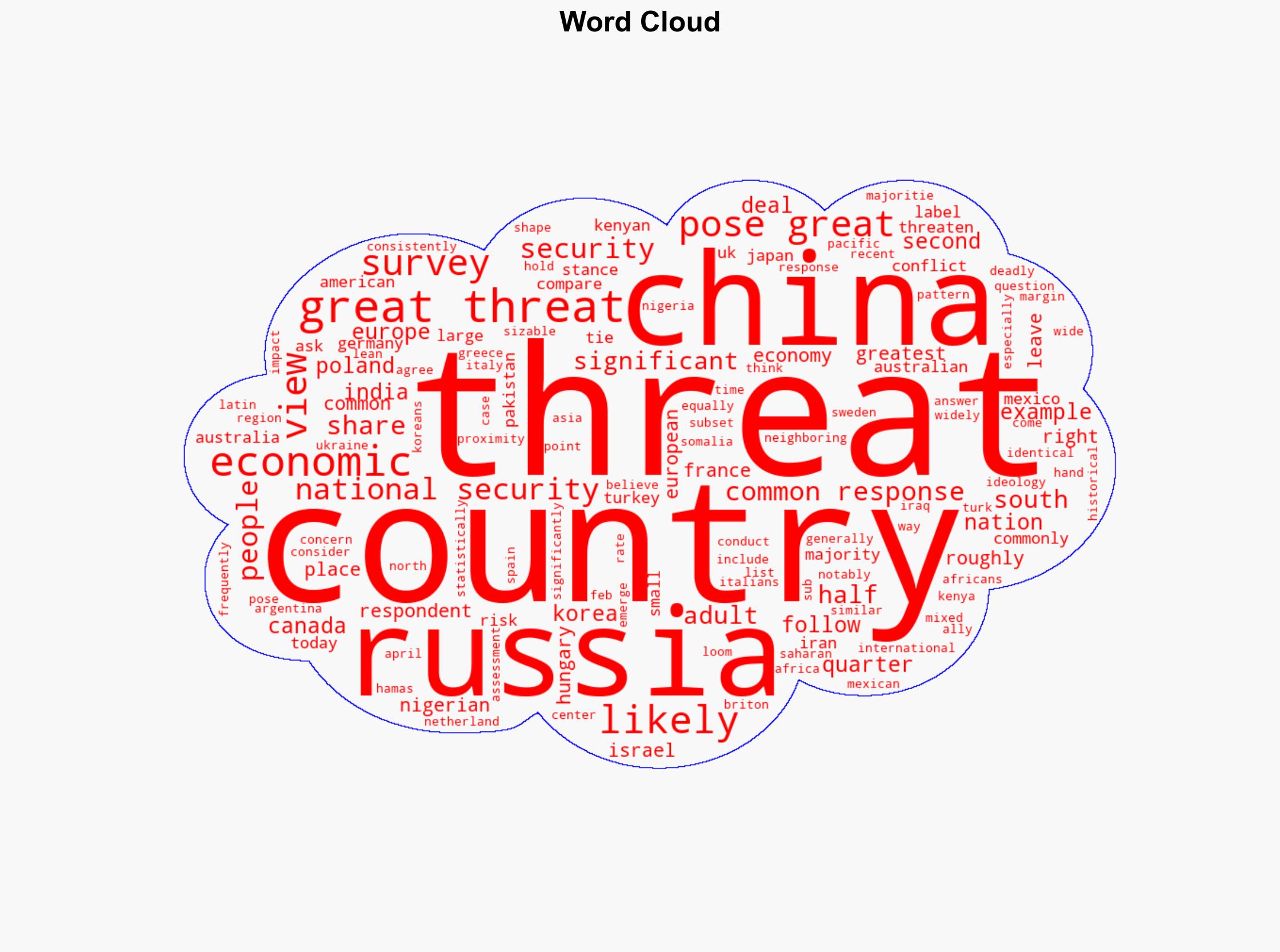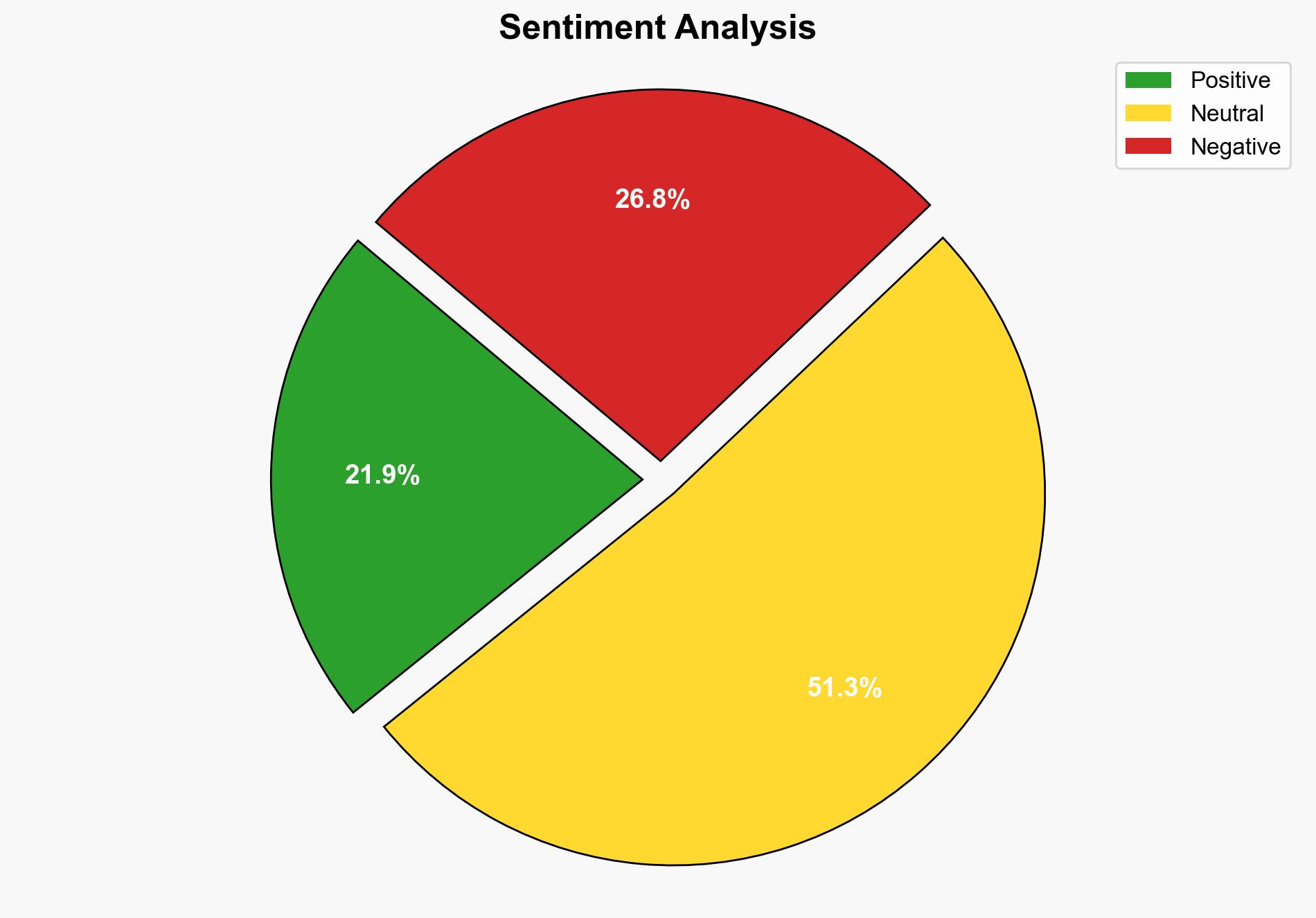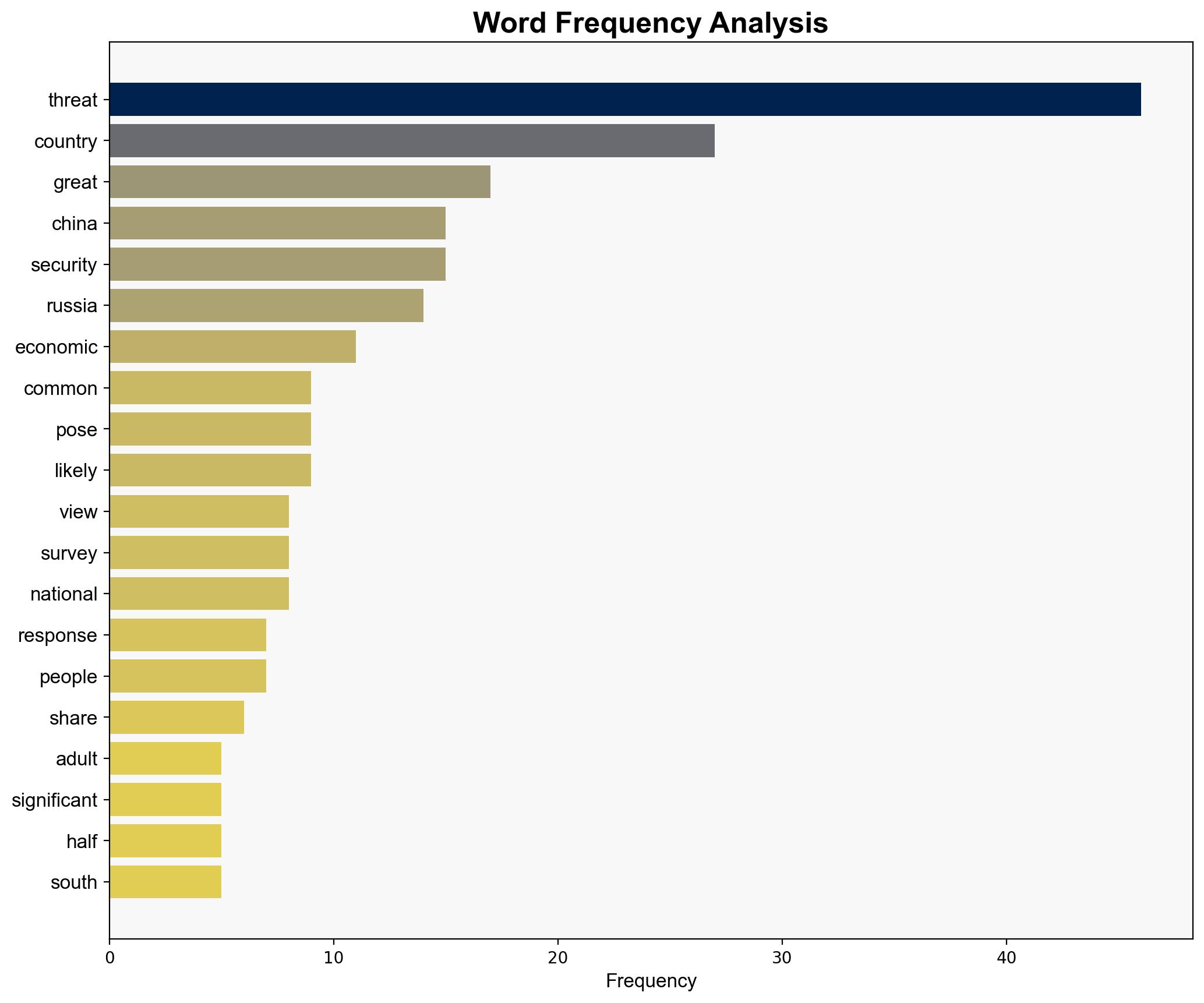2 Who do people think is their countrys greatest threat – Pew Research Center
Published on: 2025-07-08
Intelligence Report: 2 Who do people think is their country’s greatest threat – Pew Research Center
1. BLUF (Bottom Line Up Front)
The Pew Research Center survey reveals significant regional variations in perceived national threats, with China and Russia frequently identified as major concerns. In Europe, Russia is predominantly viewed as a security threat, while in the Asia-Pacific, China is seen as the primary threat. The survey highlights the influence of geopolitical tensions and historical conflicts on public perception. Strategic recommendations include enhancing diplomatic engagement and bolstering regional security alliances to address these perceived threats.
2. Detailed Analysis
The following structured analytic techniques have been applied to ensure methodological consistency:
Causal Layered Analysis (CLA)
Surface events indicate widespread concern over China and Russia, driven by systemic structures such as military posturing and economic competition. Worldviews reflect historical animosities and contemporary geopolitical narratives, while myths perpetuate the notion of an East-West divide.
Cross-Impact Simulation
Modeling suggests that increased tensions between China and neighboring countries could exacerbate regional instability, affecting trade and security dynamics. Similarly, Russian activities in Europe may prompt heightened military readiness among NATO members.
Scenario Generation
Exploring scenarios where diplomatic resolutions are achieved versus scenarios of escalating conflict provides insights into potential futures. A cooperative scenario could lead to economic growth and stability, while conflict escalation might result in economic downturns and increased military expenditures.
3. Implications and Strategic Risks
The survey underscores the risk of misperceptions fueling geopolitical tensions. The alignment of public opinion with national security policies could lead to increased military spending and strained international relations. Economic dependencies on perceived adversaries pose additional vulnerabilities, particularly in trade and technology sectors.
4. Recommendations and Outlook
- Enhance diplomatic efforts to address public perceptions and reduce tensions with China and Russia.
- Strengthen regional security frameworks to deter potential conflicts and foster cooperation.
- Scenario-based projections:
- Best case: Diplomatic breakthroughs lead to reduced tensions and economic cooperation.
- Worst case: Escalation of military conflicts disrupts global markets and security.
- Most likely: Continued strategic competition with episodic diplomatic engagements.
5. Key Individuals and Entities
The report does not specify individuals by name, focusing instead on national entities and public perceptions.
6. Thematic Tags
national security threats, geopolitical tensions, regional stability, public perception





